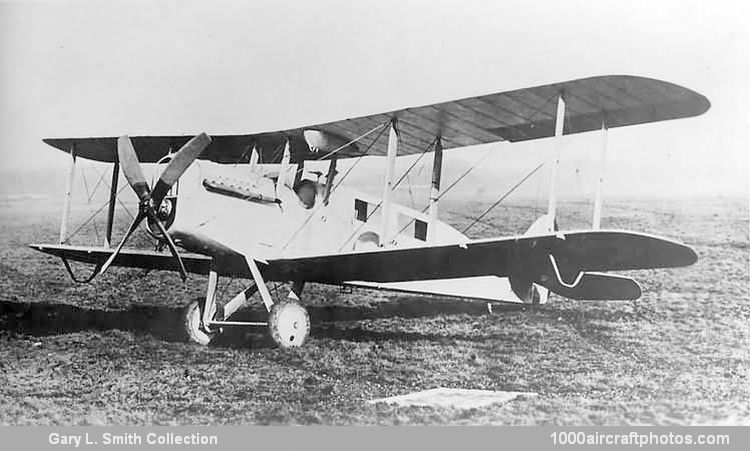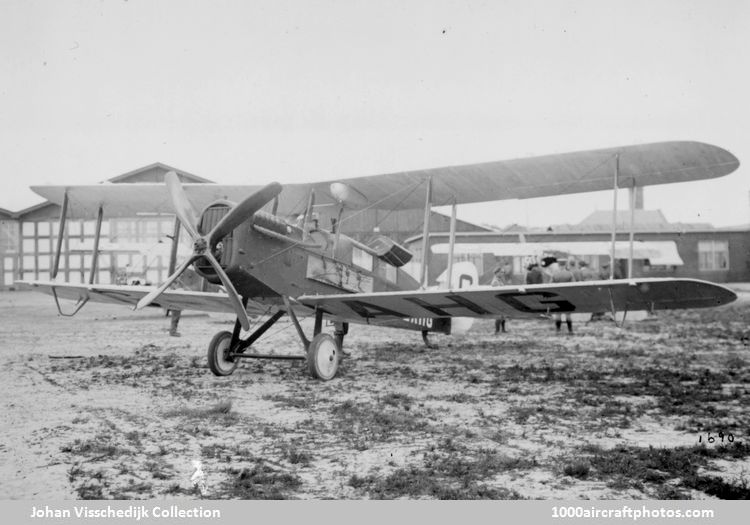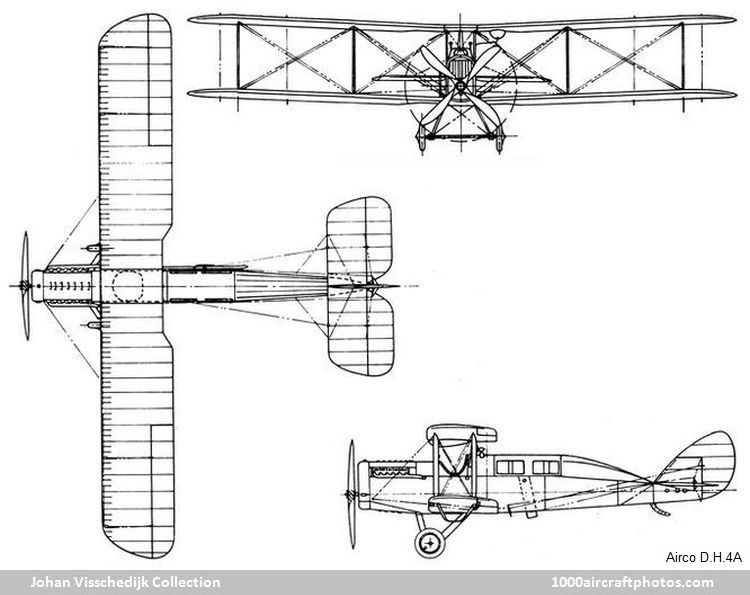07/31/2023. Remarks by Johan Visschedijk: "An often overlooked fact is that the RFC and RAF operated dedicated communications units for the transport of high-ranking officers. The BEF (British Expeditionary Force) had its own Communications Flight that was expanded to squadron status, and the two original Aircraft Depots also had their own communications aircraft. At home, a miscellany of aircraft was attached to 2 AAP (Aircraft Acceptance Park) at Hendon, on the northern outskirts of London, for use by Air Ministry officers. These aircraft were subsumed by the Communications Squadron when it formed on July 23, 1918. The squadron's A Flight was equipped with D.H.4s. These were standard aircraft, but some did have the refinement of a fully equipped rear cockpit that dispensed with the Scarff ring.
The open cockpit for the single passenger was not considered satisfactory from the viewpoint of comfort, and the D.H.4A was an attempt both to remedy this, and to double the carrying capability of the type. It is often assumed that the conversion entailed nothing more than the addition of a rear cabin, but that was not the case. The D.H.4A employed a standard fuselage frame, and was fitted with the 375 hp Rolls-Royce Eagle VIII; the greater power of that engine was needed for the increased passenger load.
The raised and glazed rear cockpit cabin hinged to port, to allow the two passengers access to seats facing one another. That access was facilitated by the provision of a short ladder that was fixed to the starboard fuselage side. The D.H.4 petrol tank was retained, but dual control was dispensed with. The traverse rocking shaft for the elevator control was moved forwards, and a small cut-out made in the root of the lower wing to allow this. The fuselage modifications altered the position of the center of gravity and so the wings had to be re-rigged to an unstaggered layout. This was achieved by the use of new sockets for the center section struts, which then assumed a rearward sweep.
The first D.H.4As entered service as the war drew to a close and were issued to the Communications Squadron, which then operated a detachment at Aéroparc de Buc (12 mls, 20 km southwest of Paris, France), for use by politicians engaged in peace negotiations. The parent unit was retitled as 1 Communications Squadron in March 1919, when its detachment became 2 Communications Squadron. The original unit moved to RAF Kenley (14 mls, 23 km south of London, UK) on April 13 and was re-designated 24 Squadron on February 1, 1920. Internal mail flights were added to the homebased unit's duties.
D.H.4As used by the RAF were usually finished in an overall high-visibility scheme of aluminum-pigmented dope; this gave them an attractive appearance when seen alongside the drab-finished aircraft of other units. That attractive appearance was often enhanced by the addition of a broad fuselage band of RAF colors.
The two Communications Squadrons plied their trade in the two-seat D.H.4s and three-seat D.H.4As until mid-1919, when the types started to be withdrawn in favor of Bristol F.2Bs. Not all of their seemingly mundane flights were uneventful, and at least two with D.H.4s ended in a fatal crash. For instance, F5743 crashed in Kent during a Paris run on February 26, 1919 when bad weather necessitated a forced landing; its passenger, Lt. Graham of the Ministry of Shipping, was seriously injured, and Lt. L.A. Hacklett, the pilot, was killed. And on May 3, D8355 crashed after take off from Hendon because its radiator had not been filled, and its engine overheated and seized. Captain E.M. Knott-AFC, its pilot, was. killed, and the passenger, Sir Frederick H. Sykes, the Controller of Civil Aviation, was injured.
One D.H.4A was lost by the RAF. On May 15, 1919, H5894 crashed into the English Channel with the loss of Capt E. B. B. Jefferson and A. Aarosohn, the Zionist leader and agricultural expert.
Other known D.H.4A conversions for Service use were: F2644, F2655, F2663, F2664, F2665, F2666, F2681, H5895.
When the Communications Squadrons disbanded in September 1919 the D.H.4As were sold to Handley Page Ltd. among hundreds of other war surplus aircraft.
In July 1919 four new D.H.4s from the production line of Glendower Aircraft Company (South Kensington, London) were also converted into D.H.4As for Airco's operating subsidiary Aircraft Transport and Travel Ltd (AT&T). They briefly flew with military serials, but were subsequently registered to G-EAHG (ex-F2694), G-EAHF (ex-F2699), G-EAJC (ex-F2702) and G-EAJD (ex-F2704).
The D.H.4As achieved some 'firsts' for British aviation. On August 25, 1919, G-EAJC, flown by Capt. E.H. 'Bill' Lawford, became the first British aircraft to carry a fare paying passenger to France, on a Hounslow (near London)-Le Bourget (near Paris) flight that cost the (then) princely sum of 20 guineas. Also aboard the 2.5 hour flight was G.M. Stevenson-Reece, journalist of London's Evening Standard, and a consignment of grouse, newspapers, leather and Devonshire cream.


